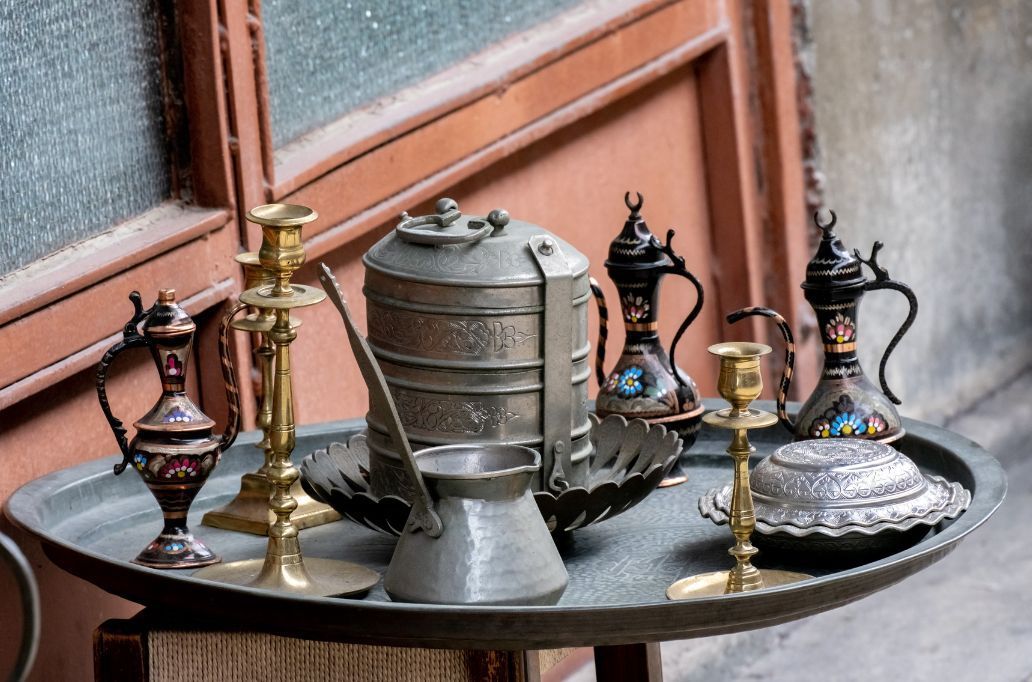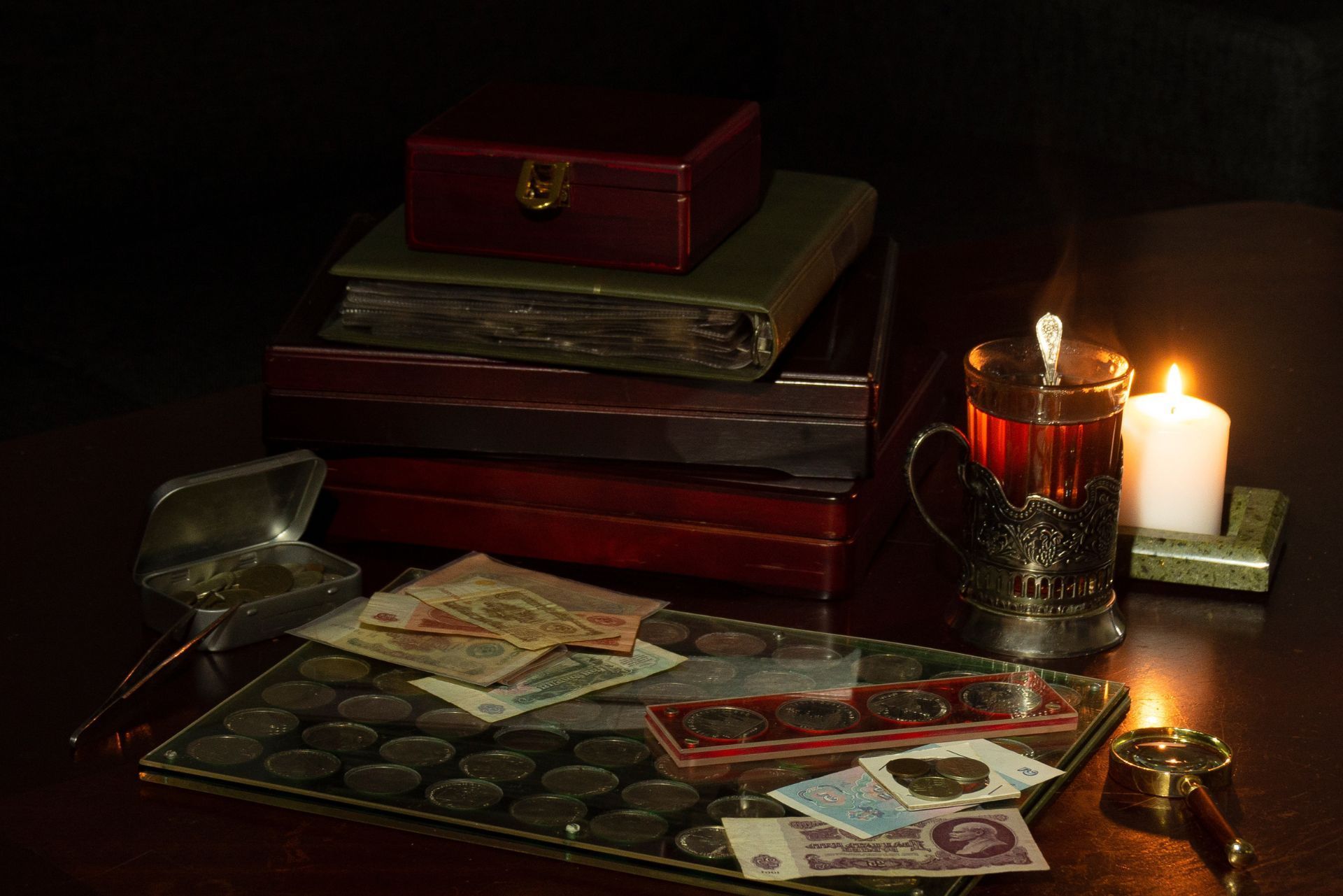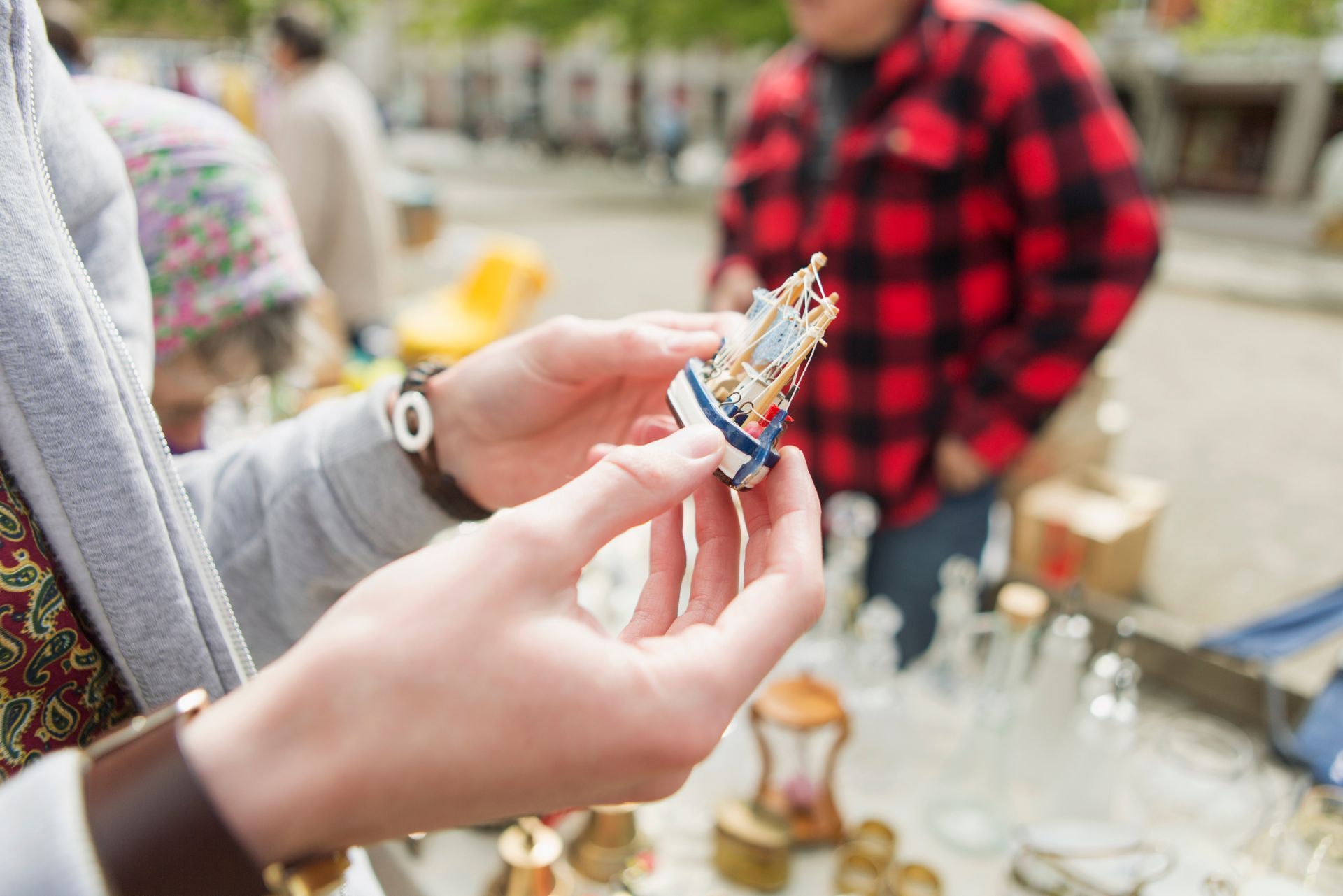
Index
Collecting items of value is a passion for many, and in Michigan, the market for collectibles is vibrant and diverse. From vintage toys and rare coins to fine art and sports memorabilia, the range of collectibles is vast. However, as valuable as these items can be, they also require protection. This is where collectibles insurance comes into play. Understanding the ins and outs of collectibles insurance in Michigan is essential for any collector looking to safeguard their prized possessions.
What is Collectibles Insurance?
Collectibles insurance is a specialized type of insurance designed to protect items that have significant value beyond their original purchase price. Unlike standard homeowners or renters insurance, which may have limited coverage for collectibles, this type of insurance provides tailored protection for items such as art, antiques, jewelry, and other collectibles.This distinction is crucial because many collectors invest not just financially but emotionally in their collections, making it essential to have adequate coverage that reflects the true worth of these treasured possessions.
The primary goal of collectibles insurance is to ensure that collectors can recover the full value of their items in the event of loss, theft, or damage. This coverage can be crucial, especially for items that appreciate over time or are irreplaceable. For instance, a painting that was purchased for a modest sum may have skyrocketed in value due to the artist's rising fame, and without proper insurance, the collector may find themselves unable to recoup that investment in the event of a disaster.
Types of Collectibles Covered
Collectibles insurance can cover a wide variety of items. Some common categories include:
- Art: Paintings, sculptures, and other forms of visual art.
- Coins and Currency: Rare coins, paper money, and numismatic collections.
- Sports Memorabilia: Autographed jerseys, trading cards, and equipment.
- Antiques: Furniture, glassware, and other vintage items.
- Jewelry: High-value pieces, including watches and heirlooms.
Additionally, collectibles insurance can extend to niche categories such as vintage toys, comic books, and even rare wines. Each of these categories may have unique valuation methods and risks associated with them, which is why having a policy that specifically addresses these nuances is vital. Collectors often seek out expert appraisals to determine the value of their items, and this can be a key factor in setting up a comprehensive insurance policy that accurately reflects the worth of their collections.
Why You Need Collectibles Insurance
Many collectors may wonder if they really need specialized insurance for their items. The answer is a resounding yes for several reasons:
- Protection Against Loss: Collectibles are often targets for theft, and without insurance, losing a valuable item can be financially devastating.
- Coverage for Damage: Accidental damage can happen, whether from natural disasters or mishaps at home. Insurance can help cover repair or replacement costs.
- Peace of Mind: Knowing that your collection is protected allows collectors to enjoy their items without constant worry.
Moreover, collectibles insurance often includes provisions for items that are temporarily away from the home, such as those displayed in galleries or taken to exhibitions. This aspect of coverage is particularly important for serious collectors who frequently share their passion with the public or participate in shows. Additionally, many policies offer options for increasing coverage as the value of the collection grows, ensuring that collectors are always adequately protected as their investments appreciate over time.

How to Get Collectibles Insurance in Michigan
Obtaining collectibles insurance in Michigan involves several steps. It’s important to approach this process carefully to ensure that your collection is adequately covered.
Assess Your Collection
The first step in acquiring collectibles insurance is to assess the value of your collection. This involves cataloging each item and determining its current market value. Professional appraisals can be beneficial, especially for high-value items.
Many collectors choose to document their items with photographs, descriptions, and receipts. This documentation can be invaluable when filing a claim or updating your insurance policy. Additionally, consider creating a digital inventory, which can be stored in the cloud for easy access and backup. This not only provides a safeguard against loss but also allows you to share your collection with friends or potential buyers effortlessly.
Research Insurance Providers
Once you have a clear understanding of your collection's value, the next step is to research insurance providers that specialize in collectibles insurance. Not all insurance companies offer this type of coverage, so it’s essential to find one that understands the unique needs of collectors.
Look for providers with experience in the collectibles market and positive reviews from other collectors. It may also be helpful to consult with local collectors or online forums for recommendations. Engaging with fellow enthusiasts can provide insights into which companies offer the best customer service and claims process, as well as any potential pitfalls to avoid. Additionally, some providers may offer specialized policies for specific types of collectibles, such as art, coins, or vintage toys, which can further enhance your coverage options.
Compare Policies and Coverage Options
After identifying potential insurance providers, compare their policies and coverage options. Key factors to consider include:
- Coverage Limits: Ensure that the policy covers the full value of your collection.
- Types of Coverage: Look for policies that cover theft, damage, and loss.
- Deductibles: Understand the deductibles associated with each policy and how they may affect your claims.
In addition to these factors, pay attention to any exclusions or limitations that may apply. For instance, some policies might not cover items that are being transported or displayed in public spaces. It’s also wise to inquire about the process for updating your policy as your collection grows or changes in value. Regularly reviewing and adjusting your coverage can help ensure that you are always adequately protected against unforeseen events.
Understanding Policy Terms and Conditions
Before finalizing any insurance policy, it’s crucial to understand the terms and conditions. This includes knowing what is covered and what is excluded from the policy. By taking the time to thoroughly read and comprehend these details, collectors can avoid unpleasant surprises when it comes time to file a claim. Furthermore, understanding the nuances of your policy can empower you to make informed decisions about your collection and its protection.
Common Exclusions
Many collectibles insurance policies have exclusions that collectors should be aware of. Common exclusions may include:
- Wear and Tear: Normal depreciation or wear over time is typically not covered.
- Specific Events: Some policies may not cover losses due to certain events, such as war or nuclear incidents.
- Items Not Listed: Any items not specifically listed in the policy may not be covered.
In addition to these common exclusions, collectors should also be mindful of limitations related to specific types of collectibles. For instance, certain policies may impose caps on the coverage amount for high-value items like rare coins or vintage artwork. Understanding these limitations is vital, as it can influence how collectors choose to insure their most prized possessions. Additionally, some policies may require proof of value, such as appraisals or receipts, which adds another layer of complexity to the insurance process.
Policy Adjustments
As collections grow or change, it’s essential to adjust your insurance policy accordingly. Regularly updating your policy ensures that all items are adequately covered. This may involve reappraising items or adding new acquisitions. It's also wise to keep detailed records of your collection, including photographs and descriptions, which can facilitate the appraisal process and serve as evidence in case of a claim.
Moreover, the frequency of these adjustments can depend on the nature of the collectibles. For example, if you are a collector of limited-edition items, the market value can fluctuate significantly over time, necessitating more frequent updates to your policy. Engaging with a knowledgeable insurance agent who specializes in collectibles can provide valuable insights into the best practices for maintaining adequate coverage and ensuring that your collection remains protected against unforeseen events.
Cost of Collectibles Insurance in Michigan
The cost of collectibles insurance can vary significantly based on several factors, including the total value of the collection, the types of items insured, and the specific coverage options selected.
Factors Influencing Cost
Several factors can influence the premium you pay for collectibles insurance:
- Value of Items: Higher valued collections will typically incur higher premiums.
- Location: The location of the collector can impact rates, especially if the area is prone to natural disasters or crime.
- Security Measures: Implementing security measures, such as alarm systems or secure storage, can sometimes lower premiums.
Average Premiums
While it’s difficult to pinpoint an exact average premium for collectibles insurance in Michigan, many collectors can expect to pay between 1% to 3% of the total value of their collection annually. For example, a collection valued at $50,000 may incur an annual premium of $500 to $1,500.
In addition to these factors, the type of collectibles being insured can also play a crucial role in determining the overall cost. For instance, rare coins, fine art, vintage wines, and sports memorabilia may each have different risk profiles and market values, which can affect premiums. Collectors of high-end art may find that their insurance requires specialized coverage due to the unique risks associated with theft, damage, or market fluctuations. Moreover, certain items may require appraisals to establish their value accurately, which can add an additional layer of cost to the insurance process.
Furthermore, the breadth of coverage selected can significantly impact the final premium. Policies may vary from basic coverage, which protects against theft and damage, to more comprehensive plans that include provisions for loss in value or coverage during transportation. Collectors should carefully evaluate their needs and consider consulting with an insurance agent who specializes in collectibles to ensure they are adequately protected. This specialized knowledge can help collectors navigate the complexities of insurance policies and find the best coverage tailored to their unique collections.

Filing a Claim: What to Expect
In the unfortunate event that a collector needs to file a claim, understanding the process can help ease the burden. Knowing what to expect can make the experience less daunting. Whether it’s due to theft, damage, or loss, being prepared can significantly streamline the process and reduce stress during an already challenging time.
Steps to File a Claim
Filing a claim typically involves several steps:
- Notify Your Insurer: Contact your insurance provider as soon as possible to report the loss or damage. Prompt notification can prevent delays and ensure that you are following the correct procedures from the outset.
- Provide Documentation: Submit any required documentation, including photographs, receipts, and appraisals. This documentation is crucial as it serves as evidence to support your claim, helping to establish the value of the items and the extent of the damage.
- Cooperate with the Claims Adjuster: An adjuster may be assigned to assess the claim. Be prepared to provide additional information as needed. The adjuster’s role is to evaluate the claim fairly and thoroughly, so maintaining open lines of communication can facilitate a smoother process.
Claim Processing Time
The time it takes to process a claim can vary based on the complexity of the case and the insurance provider's policies. Generally, simple claims can be resolved within a few weeks, while more complicated claims may take longer. Factors that can influence processing time include the need for further investigation, the volume of claims being handled by the insurer, and the availability of necessary documentation.
It's also important to stay proactive during this period. Regularly check in with your insurance provider for updates on your claim status. This not only shows your commitment to resolving the matter but also helps ensure that your claim remains a priority. Additionally, be aware of any deadlines for submitting further documentation or responding to inquiries, as missing these can lead to delays or even denial of the claim.
Tips for Maintaining Your Collectibles Insurance
Once you have collectibles insurance in place, maintaining it is essential for ongoing protection. Here are some tips to ensure your policy remains effective:
Regularly Update Your Inventory
As collections grow or change, it’s crucial to keep an updated inventory. Regularly reviewing and documenting new acquisitions or changes in value can help ensure that your policy remains adequate. Consider using a digital inventory management tool that allows you to easily track details such as purchase dates, appraisals, and any relevant provenance information. This not only aids in keeping your records organized but also provides a clear picture of your collection's overall worth, which can be invaluable during the claims process.
Review Your Policy Annually
Annual reviews of your insurance policy can help identify any gaps in coverage or areas where adjustments may be needed. This is also an excellent time to reassess the value of your collection and make necessary updates. During these reviews, it may be beneficial to consult with an insurance professional who specializes in collectibles. They can provide insights into current market trends and help you understand how changes in the market might affect your coverage needs. Additionally, if you've made significant purchases or sold items from your collection, these changes should be reflected in your policy to ensure you're adequately protected.
Document Everything
In addition to keeping an updated inventory, thorough documentation is key to maintaining your collectibles insurance. Take high-quality photographs of each item in your collection, including close-ups of any distinguishing features or imperfections. This visual evidence can be crucial in substantiating your claims in the event of loss or damage. Furthermore, maintaining receipts, appraisals, and any certificates of authenticity will bolster your case should you need to file a claim. Organizing these documents in a secure, easily accessible location ensures that you can quickly provide the necessary information when needed.
Stay Informed About Market Trends
Collectibles can fluctuate in value based on market trends, so staying informed about the current state of the collectibles market is vital. Subscribe to industry newsletters, join collector groups, or participate in online forums to keep your finger on the pulse of market changes. Understanding these trends can help you make informed decisions about your collection and its insurance. For instance, if a particular category of collectibles experiences a surge in popularity, you may want to consider adjusting your coverage to reflect the increased value. Conversely, if certain items in your collection are losing value, you might need to discuss potential adjustments with your insurer to avoid overpaying for coverage.
Conclusion
Collectibles insurance is an essential aspect of protecting valuable items in Michigan. By understanding the nuances of this specialized insurance, collectors can ensure that their prized possessions are safeguarded against loss, theft, and damage. From assessing the value of a collection to navigating the claims process, being informed is key to enjoying the peace of mind that comes with knowing your collectibles are protected.
For collectors in Michigan, taking the time to secure the right insurance coverage is not just a financial decision; it’s a commitment to preserving the passion and history behind each collectible item. Whether you’re a seasoned collector or just starting, understanding collectibles insurance is a vital step in your collecting journey.

